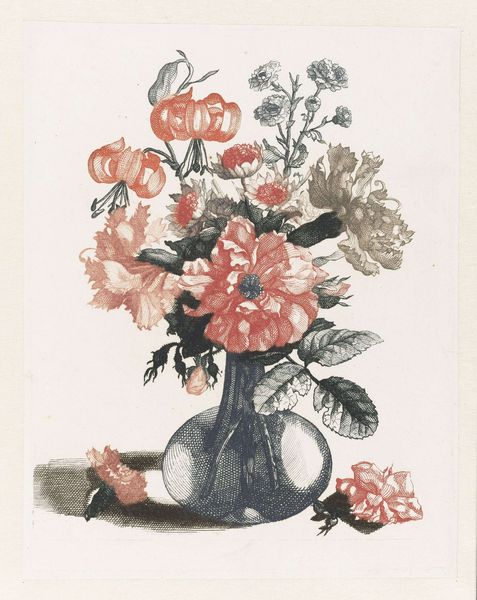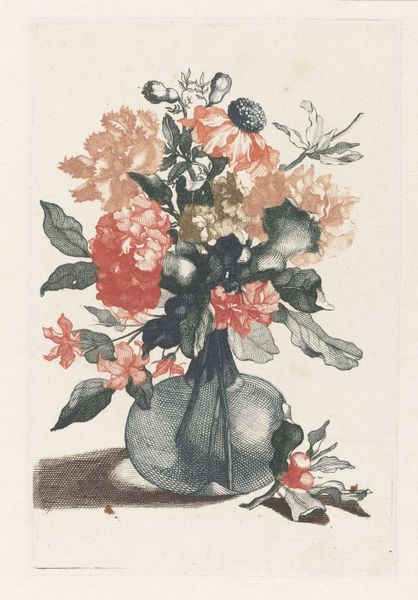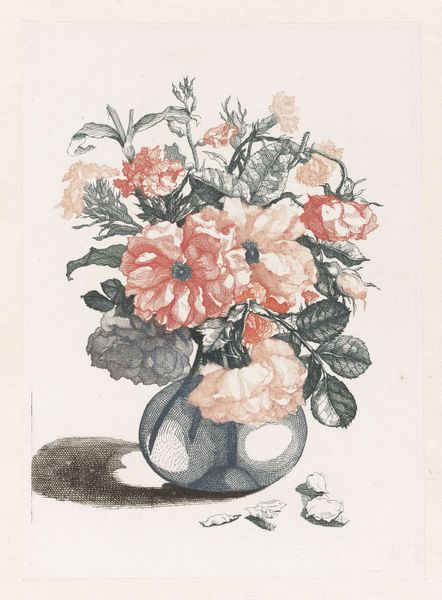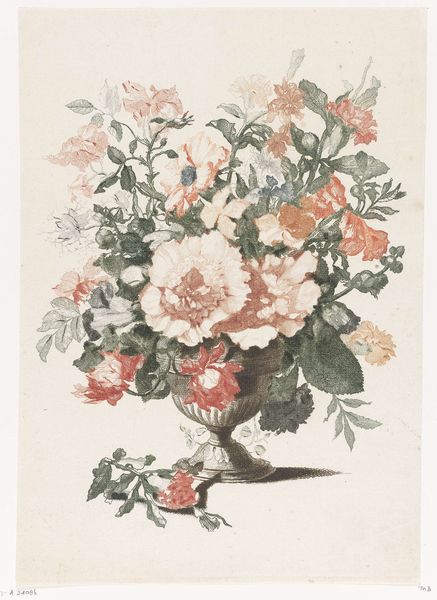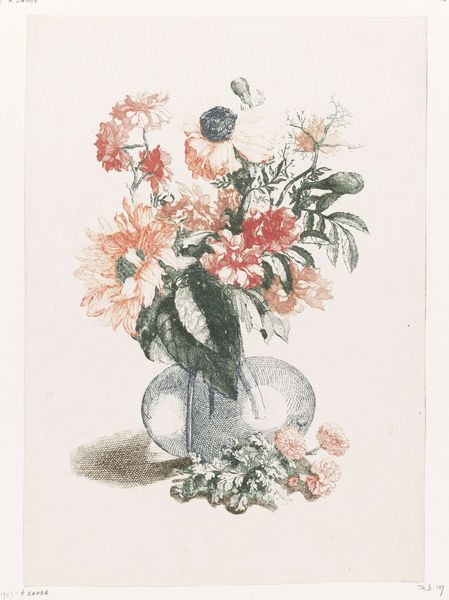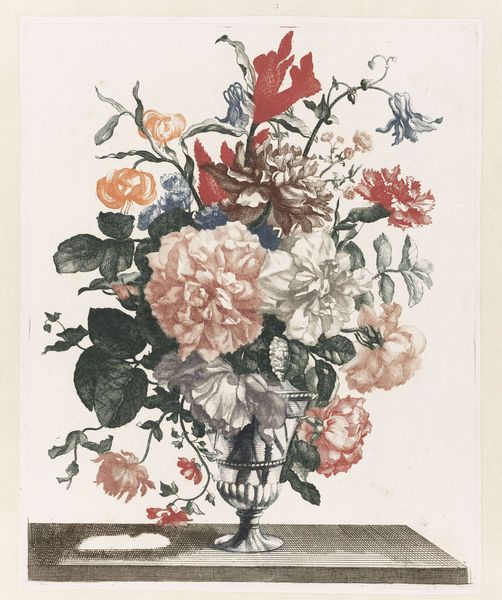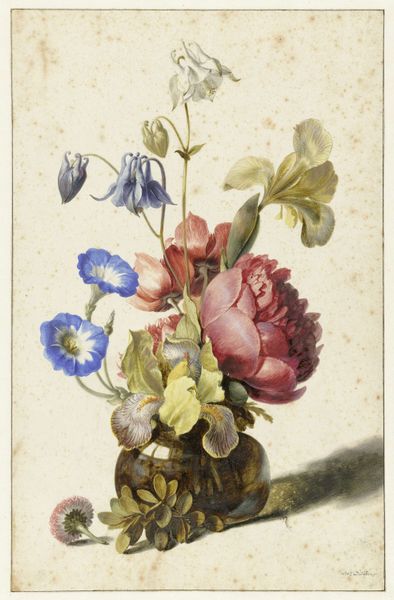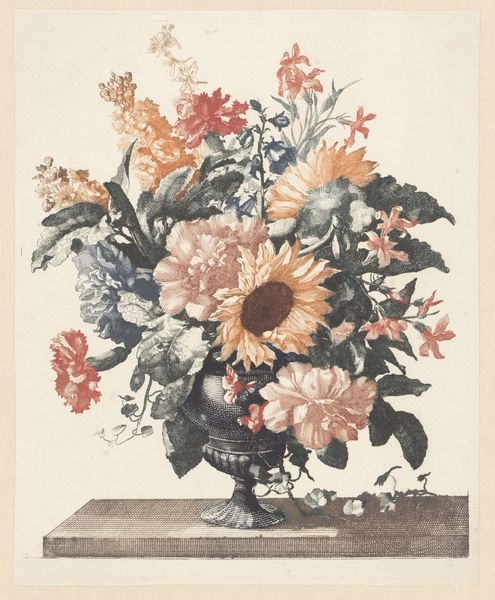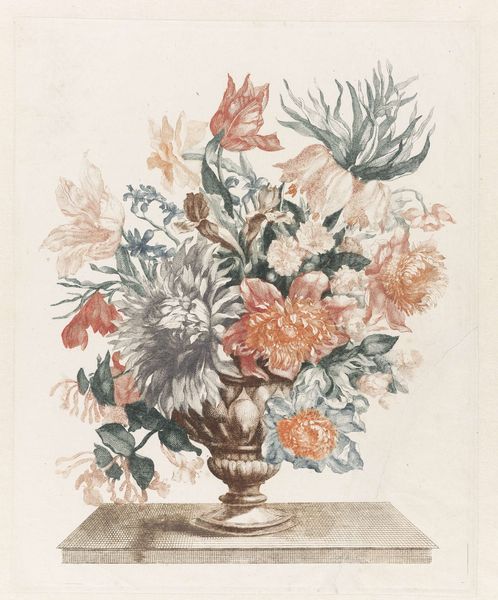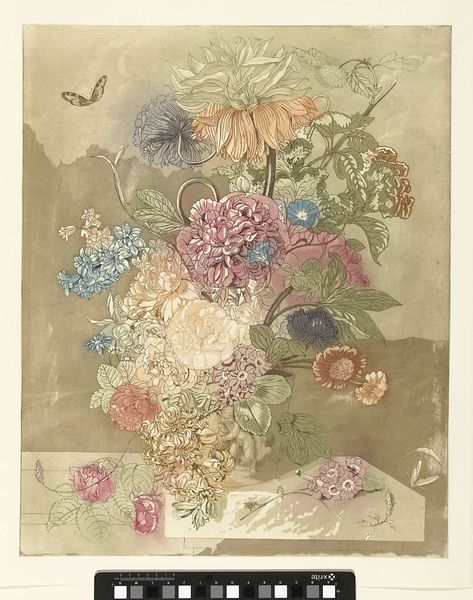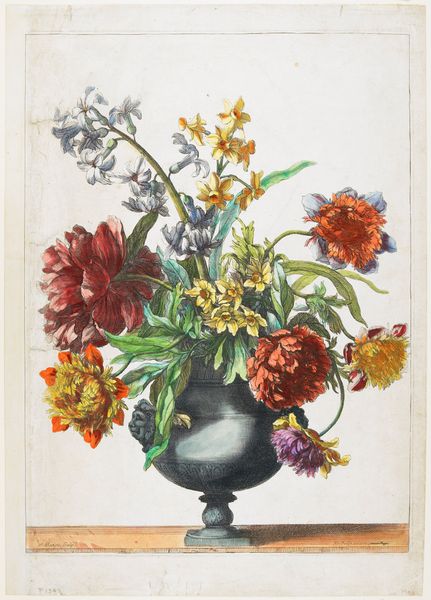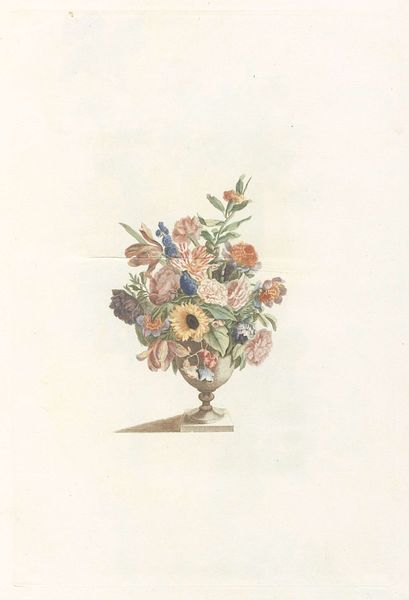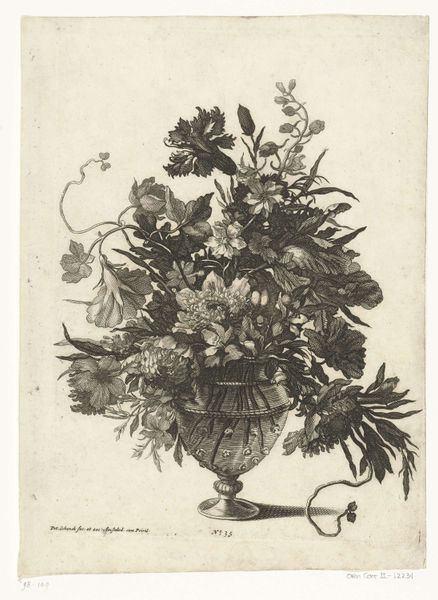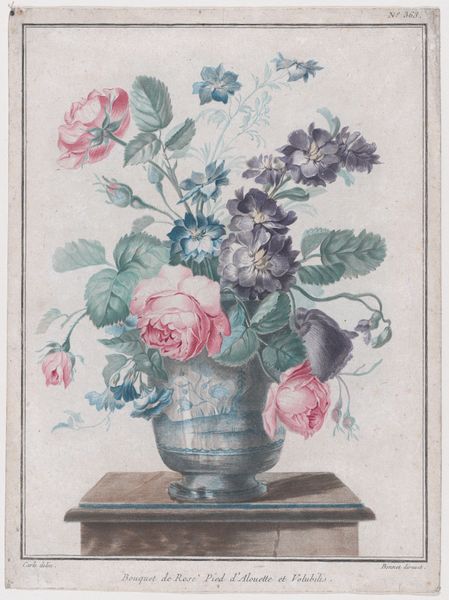
print, etching
#
dutch-golden-age
# print
#
etching
#
watercolor
Dimensions: height 209 mm, width 156 mm
Copyright: Rijks Museum: Open Domain
Curator: Here we have an etching entitled "Five Prints of Flowers in Glass Vases" dating from the late 17th century, specifically between 1688 and 1698. It's held in the collection of the Rijksmuseum and created by an anonymous artist from the Dutch Golden Age. Editor: The immediate feeling is one of fleeting beauty, like capturing a moment of fragile life before it fades. The almost monochromatic color palette also gives it an ethereal, melancholic feel. Curator: It's interesting you say that. Floral imagery during the Dutch Golden Age often carried symbolic weight, acting as memento mori—reminders of mortality and the transient nature of existence. Each flower also had specific associations, imbuing the composition with multiple layers of meaning. Editor: Right, those blooms aren’t just pretty; they’re whispering about power structures, global trade and class aspirations! Flowers like these were highly sought-after status symbols for the rising merchant class. And look at the fallen petals. It screams impermanence! A subtle, if heavy-handed, commentary on vanity, maybe? Curator: Yes, exactly! Think of the tulip mania that gripped the Netherlands; a single bulb could be worth more than a house! To immortalize such coveted yet ephemeral commodities in art highlights a culture grappling with newfound wealth and its implications. Editor: There's also an interesting gendered aspect to these still lifes, wouldn't you agree? Flower painting was considered an acceptable pursuit for women artists. It confined them to the domestic sphere, ironically. It’s a way of depicting status and wealth, but simultaneously restricts women and reduces them to domesticity, right? Curator: That’s a brilliant point. The delicate nature of the flowers themselves could have been read as a metaphor for feminine beauty and virtue at the time. Perhaps, also the artist's self-referential signifier. The use of a glass vase introduces fragility, reflection and maybe even ideas about transparency and concealment. It prompts the question of whose gaze is captured, who is reflected in the glass, and who or what is concealed. Editor: This print serves as more than just a record of aesthetic beauty; it serves as an illustration of power, class and societal restrictions, right? Curator: Absolutely. When seen through this lens, "Five Prints of Flowers in Glass Vases" reminds us how objects can carry complex social and cultural codes. It reminds us how objects can contain deeper ideas beyond their aesthetic appearance, as well as highlight cultural nuances or specific historical moments. Editor: A beautiful, yet layered piece, isn't it? Definitely more to it than initially meets the eye.
Comments
rijksmuseum about 2 years ago
⋮
Johannes Teyler from Nijmegen was educated as a philosopher and mathematician, but also worked later as a military engineer. He invented a method for printing impressions in colour, for which he received a patent in 1688. The colours had to be applied to the copper plate by hand for each individual impression. Because this was very labour intensive, his colour printing process found little following.
Join the conversation
Join millions of artists and users on Artera today and experience the ultimate creative platform.
